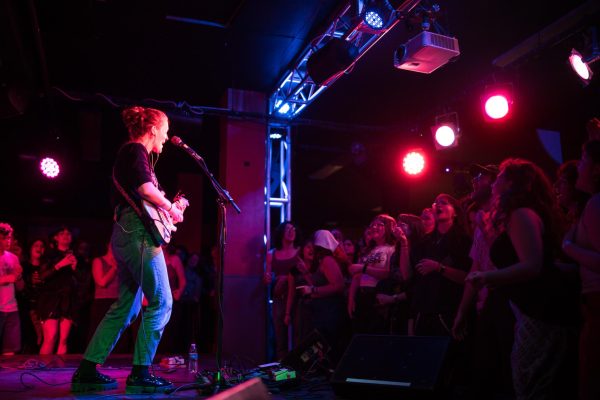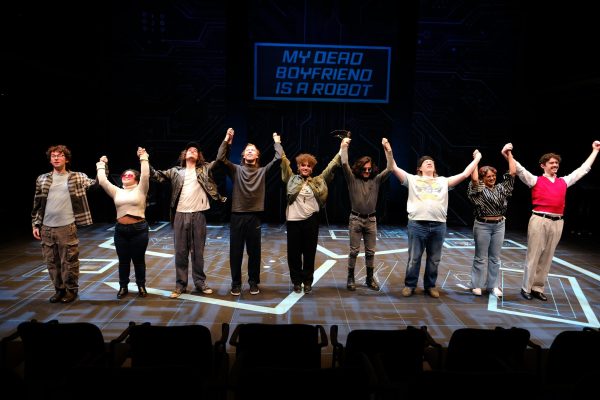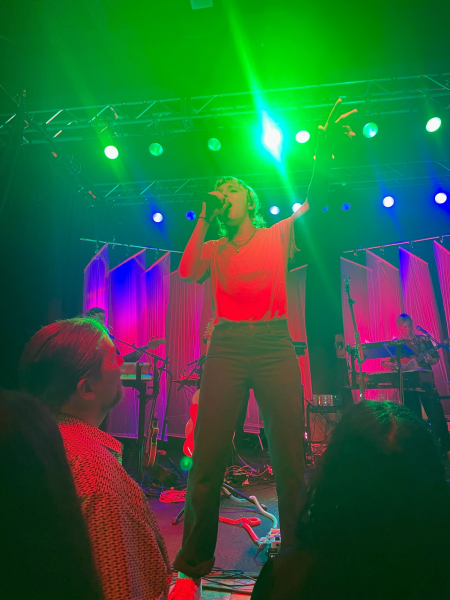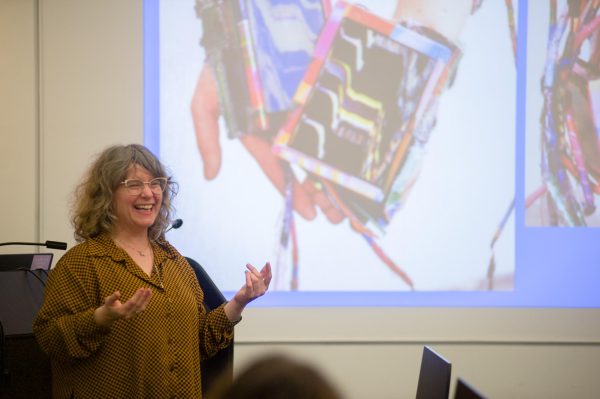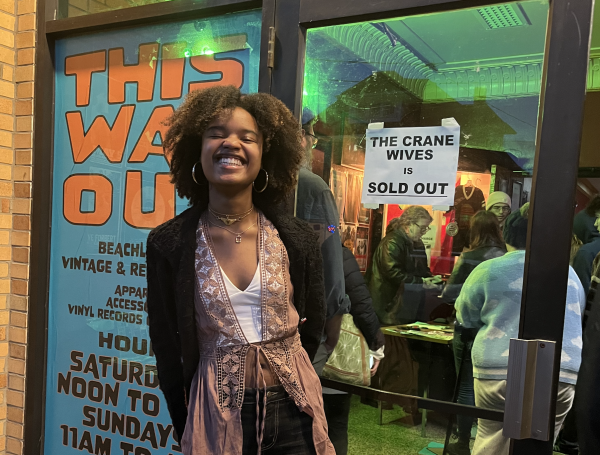“What I Didn’t Say” Showcases Marginalized Voices in STEAM
It’s no secret that cisgender men outnumber women and nonbinary people in STEAM (science, technology, engineering, art and design, and mathematics) fields. The disproportionate dominance of cis male thoughts and ideas within those spaces is often less emphasized.
“While lack of gender diversity is a significant problem in many STEAM fields, equally troubling is the extent to which the voices of nonbinary individuals and women are underrepresented in proportion to their relative representation in these fields,” wrote TIMARA Technical Director and Lecturer Abby Aresty in an email to the Review.
Over the summer, Aresty envisioned the upcoming sound art installation “What I Didn’t Say,” which will run Saturday, Oct. 13 from 1–3 p.m. in the Science Library. It will be preceded by a Friday workshop that will help put the finishing touches on the installation itself.
“Last year, I attended the wonderful event for women and nonbinary individuals working in STEM fields organized by [Nicollette Mitchell, OC ’13], and [Assistant Professor of Physics] Jillian Scudder, and hosted by CLEAR,” Aresty wrote. “A while later, I was chatting about the event with Jillian, and she mentioned that while students had really loved the event, they also were interested in having additional events with some sort of hands-on activity [incorporated].”
Aresty worked with Alexandra Amaral, a graduate student from Wheaton College, to create the earliest prototypes of the technology that Oberlin TIMARA students have helped turn into reality.
The hope was that this event would directly address the underrepresentation of non-cis male voices.
“I hope that the workshop that precedes the installation will encourage dialogue and build community among nonbinary individuals and women working across disciplines in STEAM,” Aresty wrote. “We are so busy with work in our own disciplines, we rarely have the opportunity to have these important conversations across disciplines; the goal for the workshop is to provide the space and time required for these conversations.”
During Friday’s workshop, participants will make homemade speakers out of cardboard and modules for recorded playback, each person literally constructing the device that will transmit their narrative to a listening audience. Each speaker will be hexagonal, reinforced with copper wiring, and play a unique audio loop. Individuals will record themselves speaking about personal experiences in STEAM, which will then be heard by visitors to the installation on Saturday.
The workshop will be led in part by double-degree seniors Sophie Shalit and Leslie Lang. The two TIMARA students are currently completing an apprenticeship with Aresty focused on community outreach.
While Shalit was initially worried that the task of building the speakers would be too complicated, they found it surprisingly easy.
“I think it’s really nice to be able to bring that to people who maybe aren’t experienced with hardware technology,” Shalit said. “I also think the idea behind the workshop is really cool, elevating the voices of women and nonbinary people in a [cis] male-dominated field … That’s something that I care about.”
The hexagonal speakers will be stacked inside a wooden frame that Aresty’s class installed in the Science Library.
“[The installation process] was kind of crazy, because none of us knew how to do it,” Shalit said, laughing.
Aresty named several individuals whose work inspired the exhibition.
“The project is inspired by the work of artists and educators like Leah Buechley and her former student Jie Qi, who blend crafting and technology to make [it] more inclusive, as well as Betsy Greer, who writes and speaks about craftivism, and uses crafting as a form of empowerment and activism,” she wrote.
The stacks of the Science Library will remain a normal, silent study space for those who do not seek to listen. Using wire coil equipment to pick up on the electromagnetic waves, the audio for “What I Didn’t Say” will be played through headphones.
“The [Science Library] is such a lovely, peaceful space — extremely quiet even when full of people studying,” wrote Alison Ricker, Head of the Science Library, in an email to the Review. “I like to see it used for other purposes when possible, and this seems like a perfect use of a public space where people can listen to recorded voices … and reflect on what they hear.”
For participants who choose to engage with the art, the underlying fabric of individual voices and experiences recorded during the workshop will be revealed. This lack of overbearing spatial domination also represents a rejection of historically male assertions of power.
“We cannot create a lasting solution to the gender diversity challenges these fields face simply by recruiting more girls, women, and nonbinary individuals into the STEAM classroom,” Aresty wrote. “In order to build a sustainable model for the gender diversification of STEAM fields, we need to create meaningful opportunities for these voices to be heard. I hope that the installation, which invites visitors to actively seek out and listen to underrepresented voices, will provide one such opportunity.”


